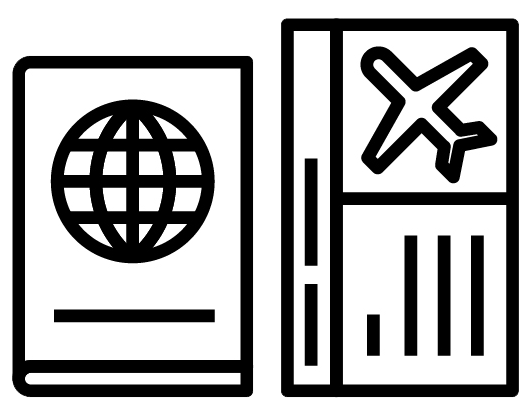May 26 2020
While restrictions are currently lifting around the country, many would-be travelers are opting to stay close to home, to minimize risk and spread during the coronavirus pandemic. However, some air travel is unavoidable due to extenuating circumstances, such as the needs of one’s extended family, or work-related obligations. Here’s how to mitigate risk and stay as safe as possible when travelling by air during the pandemic.
To protect yourself and others, continue the same practices you’ve been advised to follow while grocery shopping or attending to other essential business.
The good news is that most viruses and other germs do not spread easily on flights because of how air circulates and is filtered on airplanes. Most aircraft used by U.S. airlines use high-efficiency particulate air (HEPA) filtration systems. "This type of air filter can theoretically remove at least 99.97% of dust, pollen, mold, bacteria and any airborne particles with a size of 0.3 microns," the U.S. Environmental Protection Agency says. "Particles that are larger or smaller are trapped with even higher efficiency."
However, you do want to be wary of respiratory droplets on surfaces. Masks can protect you from spraying your fellow passengers with droplets if you cough or sneeze and can also protect your mouth and nose from the droplets of others. All major U.S. airlines, including American, Delta, and United airlines, now require employees and passengers to wear face coverings during flights except when eating or drinking. Be sure your hands are clean when putting the mask on and taking it off, and always wash or sanitize your hands after removing your mask.
You should continue to wash or sanitize your hands frequently as well, after touching surfaces frequently touched by others, after blowing your nose, coughing, or sneezing, and before touching your face or eating. Bring hand sanitizer that contains at least 60% alcohol and be sure to cover all surfaces of your hands and rub your hands together until they feel dry.
While many planes currently have fewer passengers than usual, social distancing could be difficult on crowded flights, and you may have to sit near others (within 6 feet), sometimes for hours. This may increase your risk for exposure to the virus that causes COVID-19. Try to maintain a distance of two rows from your fellow passengers whenever possible. You can also reach up and turn on the adjustable air duct above your head, known as a gasper. Turn it to a medium flow and angling it so the air current is directed slightly in front of your face. By turning the gasper on, you might be able to add some turbulence to the air in your space. Modeling studies have shown that opening the gasper for additional air flow creates some extra turbulence in your personal air space and that might create enough turbulence where particles from other passengers are unlikely to land on your mask or on your arm.
We understand that some air travel is essential and we’re proud to continue to make air travel from Springfield easily accessible to those who need it. We look forward to a time where air travel for leisure is safe again and the Springfield-Branson National Airport can continue to serve as your connection to the world.



 Bleisure: extending a business trip with leisure days to relax and disconnect. Give it a try!
Bleisure: extending a business trip with leisure days to relax and disconnect. Give it a try!